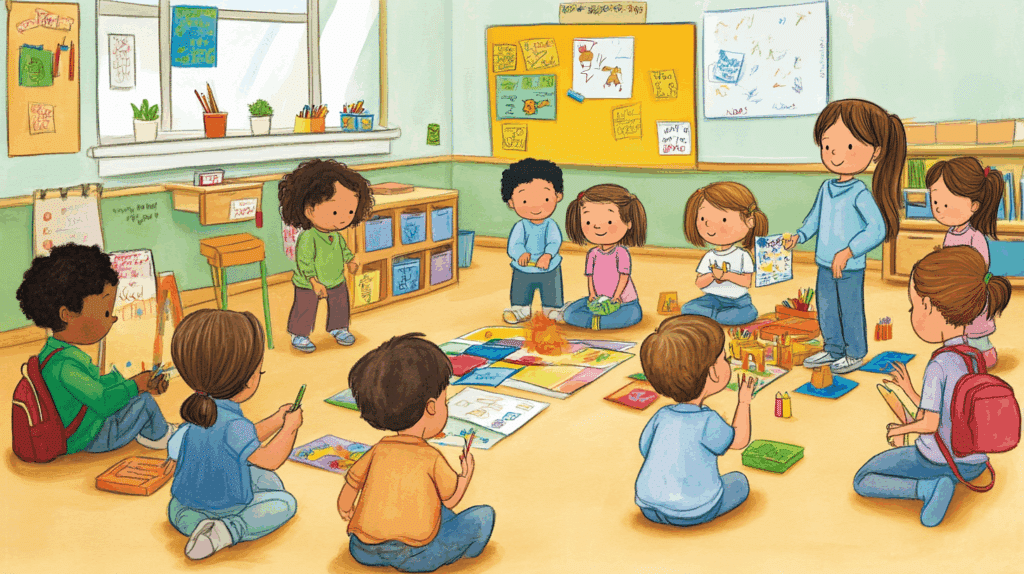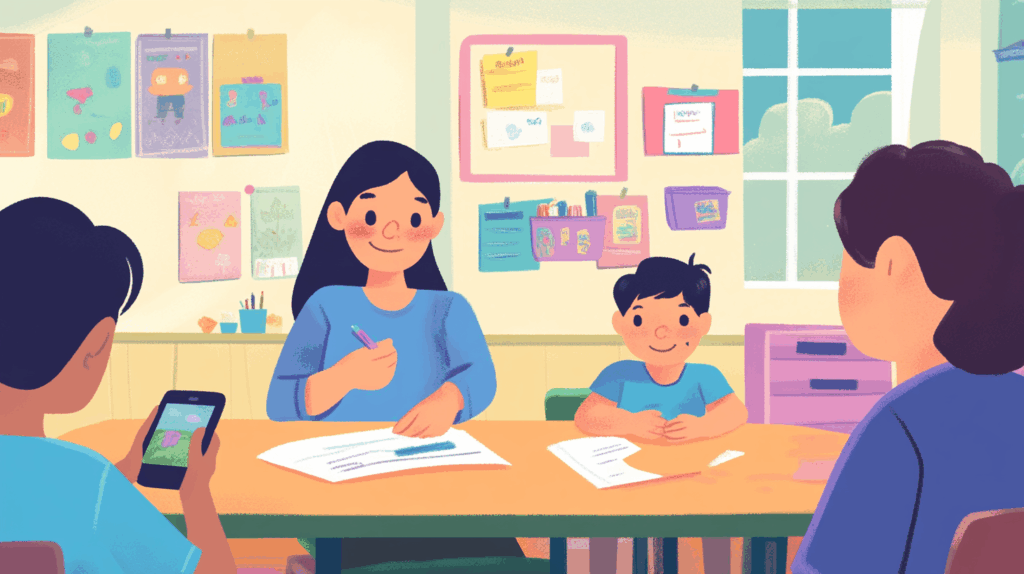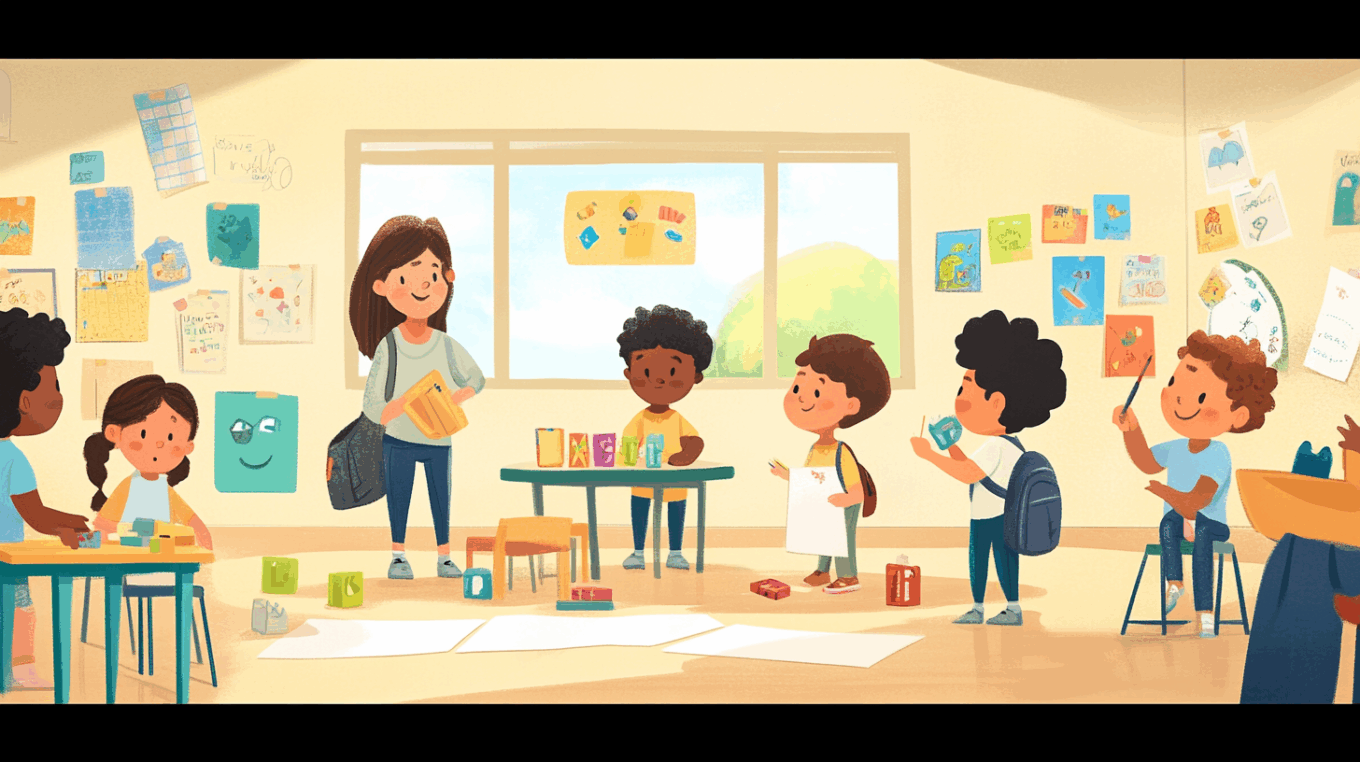Starting kindergarten brings big feelings for both kids and parents. Tears, smiles, and questions are all normal during these important first days.
The right first week of kindergarten activities can make all the difference in how children settle in. This guide walks you through what to expect and how to make the change easier.
We’ve packed it with day-by-day plans, classroom tips, and book ideas that teachers and parents can use. These simple steps will help turn worries into excitement and build a strong start to school life.
Read on to find out how to make the first week of kindergarten a time of growth instead of stress.
What to Expect During the First Week of Kindergarten
The first week of school can be full of big feelings for small children. Many kids might cry when their parents leave or seem tired at pickup time. Some might stay quiet while others talk nonstop about their day.
Parents can help by keeping morning goodbyes short and sweet. A special note in their lunchbox or a small family photo can make kids feel connected. Setting up a simple after-school routine helps children know what comes next.
Day-by-Day Kindergarten Activity Breakdown

The first week follows a steady plan to help children get used to school. Each day builds on the last to create comfort and joy in learning.
Day 1 – Welcome and Routines
On the first day, teachers focus on making children feel safe in their new space. Kids learn basic classroom habits and meet new friends through simple activities.
- Greeting and arrival procedures: Teachers show children where to hang their backpacks and how to sign in with their name cards. They practice morning greetings and learn how to line up safely.
- Introduction to rules and classroom tour: Children walk through each area of the room and learn the basic rules. They see the reading corner, art station, and bathroom, and practice using indoor voices.
- Simple name and feelings activities: Kids make name tags and join in games to learn their classmates’ names. They use face charts to show how they feel about starting school and share in a group.
Day 2 – Building Confidence
The second day helps children feel more sure of themselves in the classroom. They begin to work together and try new things with teacher support.
- Circle time and classroom expectations: Children sit in a circle and practice raising hands to speak. They learn about taking turns and how to ask for help when they need something.
- First group art project: The teachers guide students to make a class banner or mural. Each child adds their own part, using basic art tools like crayons and child-safe scissors.
- Practice using supplies: Kids learn how to get supplies, use them correctly, and clean up afterward. They try glue sticks, markers, and other tools they’ll use throughout the year.
Day 3 – Basic Academics
On day three, children start simple learning tasks. They get their first taste of letters, numbers, and stories in a fun, pressure-free way.
- Letter of the day: Teachers pick one letter to focus on. Children look for things that start with that sound, sing letter songs, and maybe trace the shape with their fingers.
- Number recognition games: Kids count objects, match numbers to sets, and play simple number games. They might use counting bears or blocks to show how many items make a number.
- Interactive storytime: Teachers read books that let children join in with sounds or actions. They ask questions about the story and let children predict what happens next.
Day 4 – Group Engagement
The fourth day helps children work with others. They learn how to share ideas and space while doing fun tasks together.
- Name graphing or scavenger hunt: Children find out who has names that start with the same letter. They might go on a hunt around the room to find objects that match picture cards.
- Music and movement activities: Kids learn songs with hand motions and simple dances. They use rhythm sticks or bells and practice following directions through music games.
- Partner sharing tasks: Teachers pair up children for simple two-person jobs. They might sort colored blocks or take turns telling about their favorite foods or toys.
Day 5 – Celebration and Reflection
The last day of the first week marks how far children have come. They think about what they’ve learned and feel proud of making it through the week.
- Class book or drawing about the week: Each child makes a page showing what they liked best about school. The teacher puts these pages together to make a class book that they can read all year.
- Parent reflection note (optional): Teachers may send home a simple form asking parents how their child felt about the first week. This helps teachers know what worked well or needs to change.
- “What I Learned” show and tell: Children sit in a circle and each shares one thing they learned. Some might show a drawing they made or tell about a new friend they met at school.
Classroom Management Tips for Teachers
Managing a room full of five-year-olds requires planning, patience, and consistent methods. These tips can help create a calm classroom where children can learn and grow.
- Use chimes, clapping patterns, or songs to signal quiet time. Keep signals consistent and practice them daily during the first weeks until they become automatic for children.
- Give five-minute warnings before activity changes. Use visual timers kids can see, and create simple cleanup songs that signal it’s time to shift gears.
- Remember that five-year-olds can focus for about 15 minutes. Break lessons into short chunks and mix quiet activities with movement to match their energy levels.
- Post picture schedules showing daily routines. Use color-coded labels on bins and shelves to help children find and return materials independently.
- Notice and praise specific good behaviors right away. Focus more on what children should do instead of what they shouldn’t do.
Must-Have Books for the First Week
These stories help children understand their feelings about starting school and build a classroom community. Read them daily to create comfort and spark helpful talks.
1. The Kissing Hand by Audrey Penn
Why it works: This gentle story shows a raccoon getting a kiss on his palm that stays with him all day at school.
Theme: Love, reassurance, and starting school. The book helps kids know that parents’ love stays with them even when apart.
2. First Day Jitters by Julie Danneberg
Why it works: A fun twist shows that even adults get nervous. Children laugh when they see teachers feel scared, too.
Theme: Normalizing school nerves. Kids learn that feeling worried about new things is normal for everyone.
3. Chrysanthemum by Kevin Henkes
Why it works: Encourages kindness and confidence in being unique. The mouse with a long name helps kids value their own names.
Theme: Self-esteem, name pride, empathy. Children learn to be kind and see how words can hurt or help others.
4. Wemberly Worried by Kevin Henkes
Why it works: Great for kids who feel anxious about everything, Wemberly’s small worries feel real to many children.
Theme: Worry, courage, making friends. Shows how finding one friend can make school less scary for worried kids.
5. Our Class is a Family by Shannon Olsen
Why it works: It builds a sense of belonging and classroom unity. The simple text helps form strong class bonds.
Theme: Classroom community, friendship, support. Teaches children that classrooms can feel safe like home.
6. School’s First Day of School by Adam Rex
Why it works: Told from the school’s point of view—clever and relatable. The building itself feels scared of new kids.
Theme: New experiences, shared feelings. Shows how everyone, even the school building, can worry about new things.
Communicating with Parents During the First Week

Good contact with families helps make the first week go well. Parents worry just as much as children do during this big change.
Send simple notes about what the class did each day. Mention things like songs they learned or books they read. This helps parents talk with their child about school.
If school rules allow, send quick pictures of activities or wall displays. Parents love seeing their child busy and happy at school. Class journals can work well, too.
Provide parents with clear guidelines for smooth goodbyes. Suggest they create a special goodbye routine, stay calm, and leave quickly without sneaking out. Remind them that most tears stop soon after they leave.
Wrapping Up
The first week of kindergarten activities set the tone for the entire school year. With the right mix of fun, structure, and care, children can move from being scared to feeling at home.
Try starting with a special morning drop-off routine. Keep conversations about school positive but honest. Ask specific questions about their day rather than “How was school?”
Look at the class schedule together each night so they know what’s coming tomorrow. Remember that each child adjusts at their own pace – some jump right in while others need more time.
The small steps you take this week will help build a love of learning that can last for years to come.




